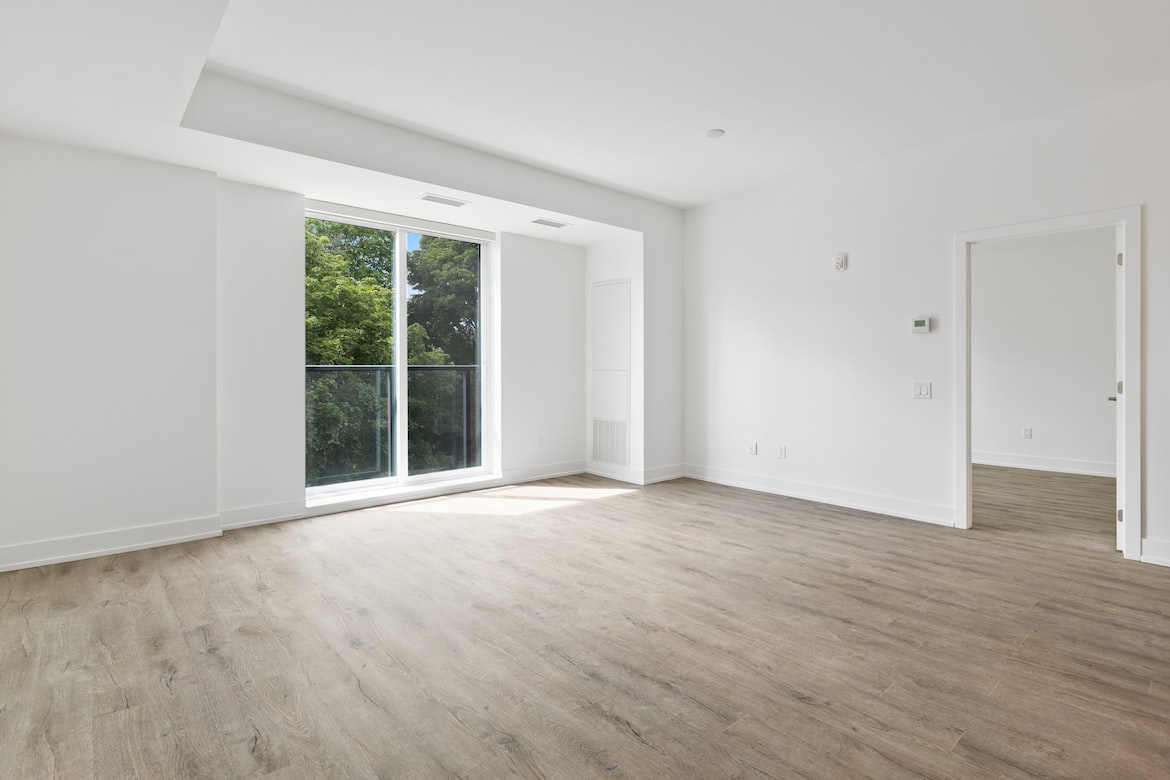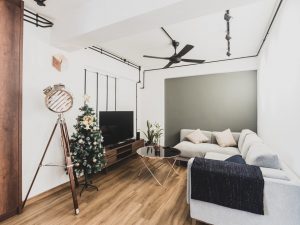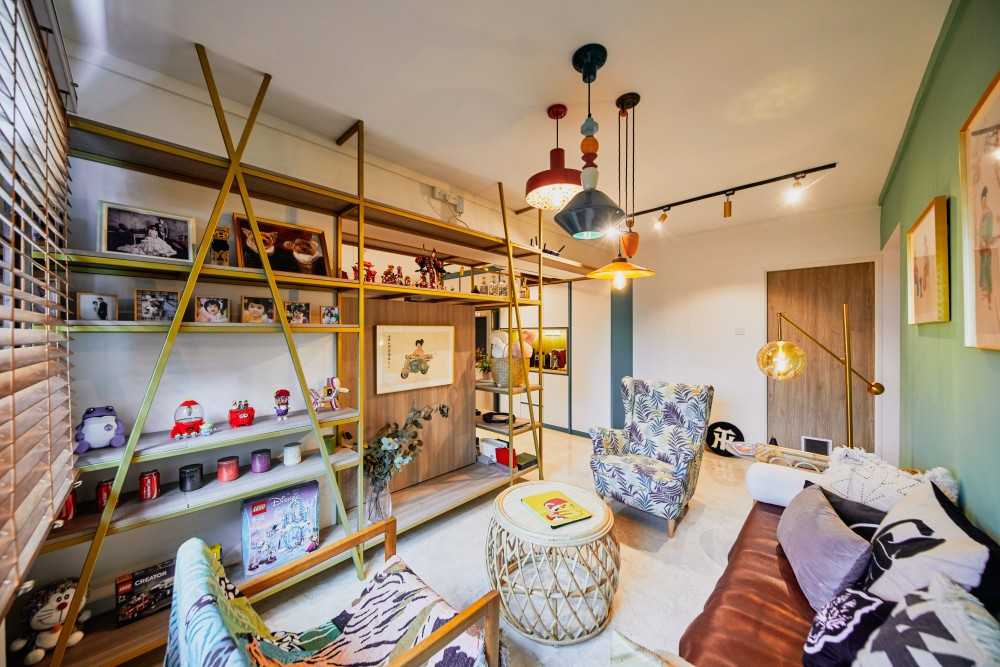How To Make Your Home More Energy Efficient
If you ask us, creating a more energy-efficient home isn’t just about saving costs – it’s about contributing to a sustainable future for Singapore.
Understanding how to optimize energy usage within our homes not only benefits our wallets but also minimizes our environmental footprint.
In this blogpost, we’ll explore practical steps tailored for Singaporean households to make your home more energy-efficient.
Understanding Energy Consumption In Singapore Homes
In our everyday lives, the energy we use within our homes plays a significant role not just in our comfort but also in our expenses.


From the moment we wake up and switch on lights to the time we wind down in the evening, our homes are powered by various sources of energy, shaping our routines and impacting our bills.
Air conditioning
Singapore’s tropical climate often means running air conditioning units for extended periods to keep our homes comfortably cool.
This constant battle against the heat consumes a substantial chunk of our energy usage, especially during the scorching months.
Gadgets and appliances
Think about the appliances we rely on daily—our refrigerators preserving food, washing machines keeping our clothes clean, and the multitude of electronic devices powering our work and entertainment. These gadgets, while making life convenient, contribute significantly to our energy bills.
Lighting
Even the simple act of illuminating our homes involves electricity. The lights we turn on in various rooms and the energy-efficient or not-so-efficient bulbs we use all add up to our overall energy consumption.
Wasted energy
A significant challenge lies in pinpointing areas where energy is unnecessarily wasted. This could be due to older appliances consuming more power than necessary, forgetting to switch off devices on standby, or even leaving lights on in unoccupied rooms.
PS: Want to understand how your family’s energy consumption stacks up against others?
Take a closer look at SP Group’s website. Here, you can find a comprehensive breakdown of average energy usage, taking into account whether your home uses gas and factoring in your household size.
Practical Steps To Enhance Energy Efficiency
How do you make your home more energy efficient? Here are a few ways.
Switch to energy-efficient appliances
Investing in appliances with higher energy efficiency ratings is a proactive way to lower your household’s energy usage.
The National Environment Agency’s (NEA) energy label provides a reliable indicator of a product’s energy efficiency, helping consumers make informed decisions when purchasing new appliances.
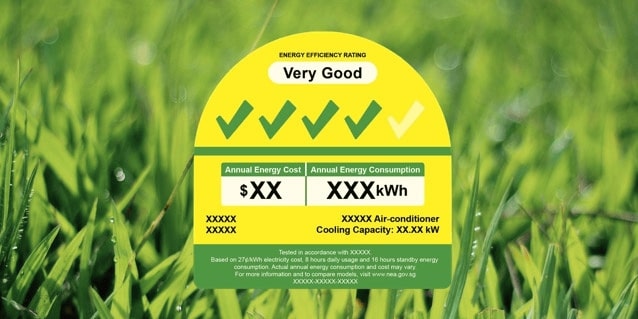

This label categorizes appliances based on their energy efficiency, typically using a rating system from one to five ticks. A higher number of ticks indicates a higher level of energy efficiency. For example, a five-tick air conditioner or refrigerator consumes significantly less energy than a one-tick counterpart while performing the same function.
Here are some examples on how appliances with higher energy efficiency ratings work:
- Energy efficient air conditioners are designed to provide effective cooling while consuming less electricity. They often come with features like inverter technology, which adjusts compressor speed according to cooling needs, improving efficiency.
- Energy efficient refrigerators are designed with better insulation and compressors to maintain optimal temperatures using less energy. Models with the NEA’s higher tick ratings ensure reduced electricity consumption without compromising storage capacity or functionality.
- Energy-saving fans can significantly reduce electricity usage while providing adequate air circulation. Look for features like DC motors, which are more energy-efficient than traditional AC motors.
While shopping for appliances, you may notice that energy-efficient appliances have a higher upfront cost as compared to non-energy efficient ones.
While this is true, energy-efficient appliances lead to substantial savings on electricity bills in the long run due to their reduced energy consumption.
Lastly, beyond NEA’s energy label, consider looking for additional energy-saving features such as programmable settings, smart technology integration, and eco-friendly modes that further enhance energy efficiency.
By embracing appliances with higher energy efficiency ratings, you not only contribute to a greener environment but also enjoy cost savings and enhanced performance in your household appliances.
Optimising your air conditioning settings
Living in a tropical climate like Singapore means that we often rely on air conditioning for comfort. Here, optimizing how you use your air conditioning can significantly impact both your comfort and energy bills.
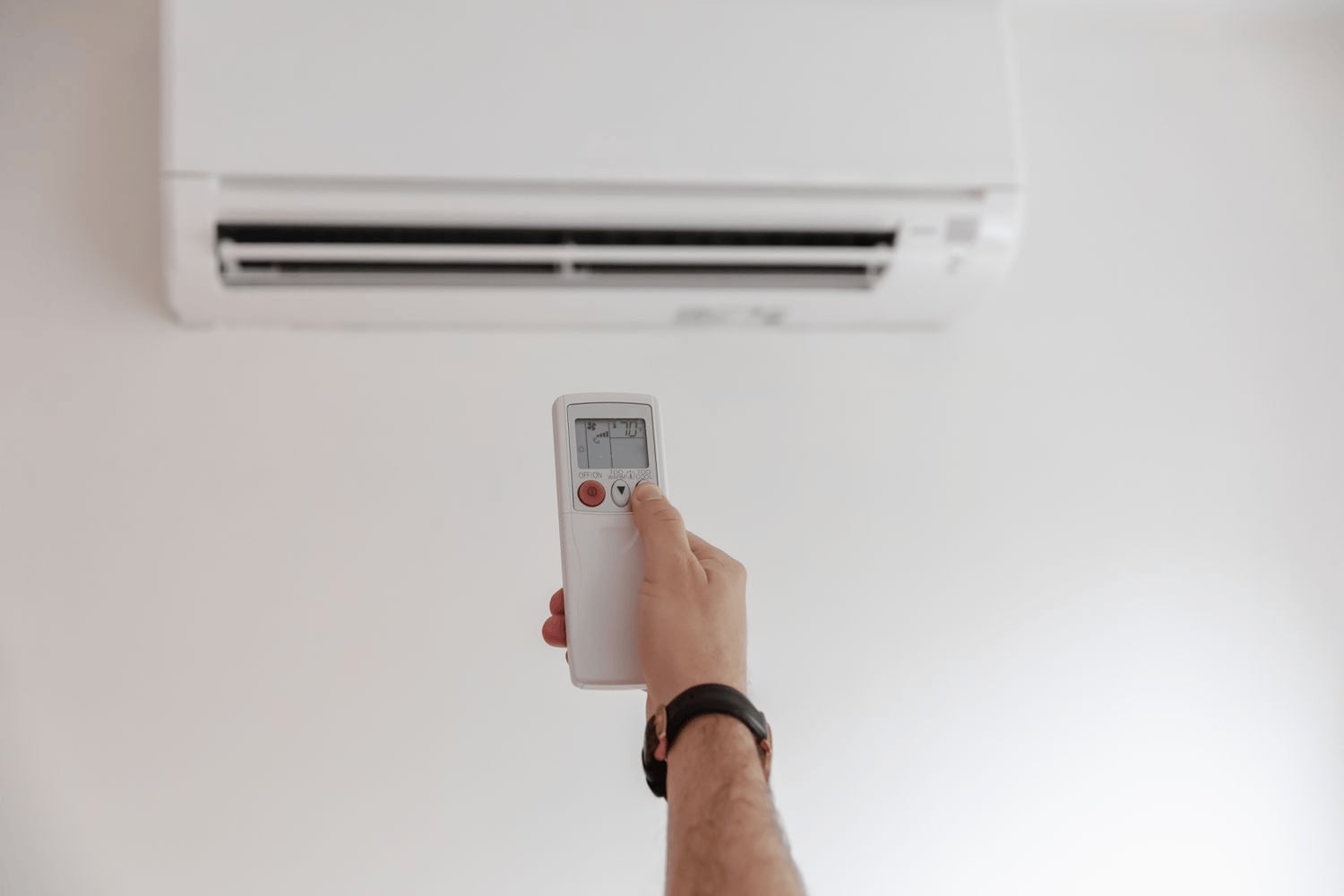

Firstly, adhere to the recommended temperature settings as much as possible.
The recommended temperature for indoor comfort in Singapore typically ranges between 24°C to 26°C. Setting your air conditioner within this range ensures comfort while minimizing energy consumption.
If you’re wondering about the science behind it, air conditioning systems work by cooling air through a compressor that circulates refrigerant.
When the temperature is set too low, the compressor continuously works harder to maintain that lower temperature.
In the recommended range of 24°C to 26°C, the compressor operates more efficiently, reducing strain and energy consumption while still providing comfortable indoor temperatures.
Also, using timers to switch your air conditioning off after a certain period of time can drastically reduce your energy consumption as well.
In particular, this is a good strategy to use at night.
Since nights tend to be cooler, you may want to turn on your air conditioning for a few hours when you go to sleep, then have it automatically turn off after that.
Another option is to set the air conditioning at a lower temperature for a few hours, then adjust it to a slightly higher temperature for the rest of the night.
Do some experimenting here – hopefully, you’ll be able to find a win-win situation where you achieve optimal comfort while minimizing energy consumption.
Maintaining your air conditioning
Maintaining your air conditioning unit effectively will not just extend its lifespan, but also ensure it’s more efficient.
To do this, make sure you schedule professional servicing for your air conditioning units every three months.
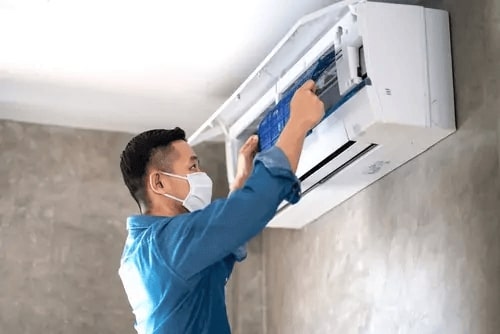

During these servicing sessions, professionals perform maintenance tasks such as cleaning and replacing the filters, inspecting and cleaning the coils, and clearing the condensate drain.
Comprehensive maintenance activities ensure that the air conditioning system operates optimally, reducing strain on the unit and potentially lowering energy consumption.
Through regular and thorough servicing, professionals can also identify and address potential issues early, preventing them from causing significant system inefficiencies or higher energy consumption.
Utilising external shading
Utilizing external shading methods offers a practical way to minimize heat gain through windows, optimizing your indoor environment.
Curtains, blinds, or external shading structures like awnings or exterior shutters act as barriers against direct sunlight entering your home through windows. They prevent excessive heat gain, keeping indoor temperatures cooler without relying heavily on air conditioning.
By blocking or minimizing sunlight penetration, these shading methods reduce the thermal load on your air conditioning system. This means your air conditioner won’t have to work as hard to maintain comfortable indoor temperatures.
Implementing Energy-Saving Practices
By adopting simple yet impactful habits, you can implement energy-saving practices within your household and reduce the amount of energy you consume.
Firstly, build the habit of switching off electronic devices completely when not in use instead of relying on standby mode. This includes TVs, computers, gaming consoles, and chargers.


Why should you turn off your devices?
When devices are in standby mode, they are not fully powered off but remain in a low-power state to respond quickly when turned on.
Even in standby mode, these devices draw a small amount of power to maintain features like displays, internal clocks, or instant-on capabilities. This standby power consumption can add up significantly when multiple devices are plugged in.
Running in the same vein, external power supplies (like those on chargers for laptops, phones, or gaming consoles) often continue to draw power even when the device is not connected or is fully charged. Here, the transformer or adapter continues to consume a small amount of electricity.
A good practice is to unplug these devices when not in use, so that this completely cuts off their access to electricity, and eliminates standby power consumption.
Alternatively, you may choose to utilize power strips with an on/off switch. This allows you to easily cut off power to multiple devices at once, effectively eliminating standby power consumption without the need to unplug each device individually.
A Final Word On Making Your Home More Energy Efficient
By adopting these simple yet effective strategies, we not only reduce our energy footprint but also save on costs while promoting a more sustainable lifestyle.
Every small adjustment contributes to a more energy-efficient and eco-friendly home.
Want to check out home renovation projects for more inspiration? Browse home renovation projects on Hometrust, or click the button below to get connected with expert designers!
Renovating soon? Let Hometrust recommend the best interior designers.
If you are reading this, you are probably wondering how you can create your dream home.
Here’s the thing, everyone’s needs and requirements for their home renovation is different. A designer that may work for someone else, may not quite work for you.
At Hometrust, we’re here to help match top rated designers, recommended by past homeowners to you through our data-driven and matching algorithm.
Whether you are looking for partial renovation or a full fledge overhaul, we’ll be able to recommend you top designers to match your renovation requirements and lifestyle.
Recommendations and free and you can simply start by helping us understand your needs below!
Get RecommendationsRenovate safe!
The Hometrust Team

